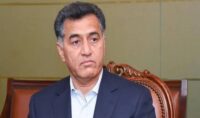July 8, 2021: After 10 days of lockdown, the highly contagious Delta variant has moved from the eastern suburbs, a predominantly English-speaking, middle class part of the city, to Sydney’s south-west, its most ethnically diverse. Big multigenerational households are common, household incomes and savings are smaller and many are employed in face-to-face work.
The NSW government’s strategy of trying to keep the economy afloat while avoiding the initial lockdown and finding out the issues seems to be decisively weak. On Thursday, Prime Minister Gladys Berejiklian announced that there were 38 cases – a record for the epidemic – of which only 18 were isolated. Of the other 20, 11 had been out in the community, and nine had been in partial isolation, which apparently means the person was identified as a close contact of an infected person but had been out in the community for some of their own infectious period. That’s bad.
The problem for the NSW government is that it has sent mixed messages about what it is trying to achieve with the lockdown – and even more vague messages on Thursday that the NSW How to get out of Part of this reflects the tension within the cabinet. NSW Treasurer Dominic Perottet argued at a cabinet meeting on Tuesday not to extend the lockdown until July 16. On Thursday, he told 2GB that it was his job: to “support business” during the pandemic.
This may be understandable given his portfolio, but as a cabinet member his perspective should be broad and he should assess the short-term pain of the initial lockdown against long-term pain. Health Minister Brad Hazzard suggested Wednesday that the NSW may have to learn to avoid the virus circulating in the community. In the wake of this dangerous proposal, he remained silent at Thursday’s press conference. “I agree with the prime minister,” he said in a statement.
And then there are the mixed messages to shoppers and employees. Unlike Victoria, a much wider range of retail stores remain open in NSW: department stores, Harvey Norman, JB Hifi, Flower Power remain open. Yet, on Thursday, Berejiklian and her health minister were imploring Sydneysiders, to stay home. Please don’t browse when shopping for food essentials. Get in and out as fast as possible.
“Write a list before you go,” advised Chant. “Try to limit your exposure.”
“Only go out for urgent medical care. Have an appointment before you go or call an ambulance,” advised the premier.
So far NSW has prided itself on its lighter touch strategy, with its intermittent expansion tracing system (described as the Gold Standard), mask mandate, boundaries of major indoor locations and the North last Christmas. Arrangements have been made for geographically specific lockdowns on the beaches. But while it worked with disruption before, it is no longer working. As both Berejiklian and Chant stressed on Thursday, the Delta is different. About 23 days after the first case was identified, official figures on Thursday revealed that there are now 29 cases that are not directly linked to an unknown case or cluster, and a further 87 to 29 of these 29 unrelated cases.
Berejiklian’s message had become more strident and decisive: Stay home, don’t visit family. Don’t even go and see older relatives unless its absolutely essential to deliver care. Don’t take the kids to see grandma. Define family narrowly.
But business is still being encouraged to stay open, which means NSW workers will feel obliged to get on public transport and turn up, particularly without the safety net of jobkeeper. On Thursday afternoon Scott Morrison announced the federal government would waive the asset test for NSW workers to access emergency support, which previously ruled out people who had $10,000 in the bank.
Rather than case numbers a day, the premier instead referred to desired vaccination rates.
“I know it is really hard but our strategy is that we want this to be the one and only lockdown between now and when most of our population is vaccinated, and on that point, I want to stress that some weeks ago I said our aim was to have 10m jabs,” Berejiklian said.
“That’s about 80% of the adult population but only 62% of the New South Wales population,” she said.
Vaccination rates of this magnitude are months away. So far Australia has just 9.8% fully vaccinated.
The sad truth for NSW is unless there is a dramatic turnaround in daily case numbers and a high degree of confidence that the contact tracers are on top of all chains of transmission, it’s unlikely the lockdown can be lifted.
Stay tuned to BaaghiTV for latest news and Updates!






